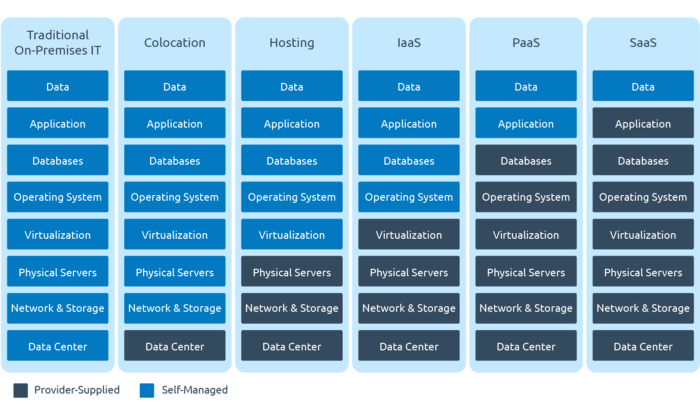Same quality service, faster implementation time. Made possible by moving to a cloud environment.
The calming clouds we can see in the sky are made up of natural, floating ice crystals.
The digital cloud, on the other hand, is invisible, agile, scalable, and gives your organization an assortment of capabilities that were previously unheard of.
Leading businesses, organizations and institutions are implementing cloud technology to deploy numerous strategies that would have been unimaginable ten years ago – anything from Netflix ensuring their users from around the globe have enough processing capability for Friday night movies, to Amazon Warehousing cataloging billions of items to be sold for the next impulse spending holiday. Even Adobe transitioned from enterprise software to offer cloud-based services, enabling clients with the latest developments while constantly improving their products. This eliminates the need for you to re-download a new release – simply enable updates to the software as required, and you are good to go.
But what exactly is cloud computing, and how can real property reap its benefits?
Cloud Computing
Cloud computing is any Information Technology (IT) service you use that is not stored locally on your PC or within your organization. These are IT services that you access effortlessly through an internet connection from any location. Essentially, by using a service offered in a cloud environment, your business would not need to house the infrastructure or processing capabilities in-house.
Your experience working from home has probably involved some cloud usage – even creating and working on documents saved on OneDrive/Google Drive is a form of cloud computing. If your work can be accessed from anywhere, so long as you can log in to the web-based browser, you are using the cloud.
Cloud computing allows your business to have as much storage capacity as possible without worrying whether an employee’s PC will crash. Previously computer crashes resulted in the loss of valuable data, information, and hard work. Working on the cloud also allows for complete versioning control, automation, and real-time collaboration.
But the cloud is not just one place. There are many different environments that your business could choose to deploy in an instance, namely the Public, Private, Community and the Hybrid Cloud. Depending on which scenario you would like to operate in, there are benefits and downfalls to each.
The following graphic from vXchnge gives a brief description of each type of environment.

Source: The Different Types of Cloud Computing and How They Differ, vXchnge
Real Property and Cloud
Facilities managers who have been using enterprise software remember, or as least have heard of, someone going through the traditional implementation process for onboarding on-premise IT. It took a minimum of 8-16 months and relied on client progress, such as mapping their properties and assets. It also included numerous discussions determining project requirements to ensure software configuration to your business’s needs and production environment. Everything was on-premises and being managed 100% by the client.
But in 2021, we see that the majority of clients are interested in a comprehensive, streamlined Infrastructure Management Solution. Onboarding a new client into the cloud environment for their business is significantly reduced, and they can customize different fields from an out-of-the-box solution instead. Imagine the same powerful capability but with fewer resources required to deploy and maintain your facilities and assets. Implementation time is reduced for SaaS products as it takes the responsibility of different components away from the client and places them on the service provider. In a SaaS model, the client is responsible for their organization’s data and what the inputs are for the service.
The following chart from Medium depicts the multiple attributes and which services would be responsible for them under each model.

Source: What is IaaS vs SaaS vs PaaS and XaaS: what’s the difference. Examples, Medium
As IT companies optimize their products, service offerings, and client experiences, the traditional model outlined above does not provide the same user experience it once did. It can be complicated, messy to integrate into a new production environment, and expose a new set of challenges for an organization. Simply put, technology is changing so rapidly that it makes more financial sense to invest in companies who can provide you with the software as a service version of the desired product. So, how exactly can IWMS and facilities management software offered as a SaaS solution improve your customer experience?
Benefits of IWMS as SaaS
1. Faster Implementation
Offering clients a cloud service allows providers to efficiently provision a server to get an instance/ version in the cloud. Clients can have the application and use it within hours. Also, SaaS dramatically reduces the frequency and number of issues that could arise with software installation and deployment.
2. Reduction in costs/ Overhead
Cost savings depend on the deployed software environment. Whether it is inside a public or community cloud can drastically reduce individual costs. This model allows for distributed maintenance costs as the service provider is responsible for that environment. These costs are minimized in other models but not to the same degree that sharing does.
3. Interoperability and Economies of Scale
SaaS easily allows clients to make upgrades and access new modules as all offerings are usually available in the same cloud environment. Essentially it provides your business with the opportunity to make changes without procuring the software from the beginning. You will be able to scale your solution alongside your business requirements.
4. New Versions and Improvements
Any new updates are easily shared and available to all customers. When deployed in a cloud environment, the traditional costs that come along with upgrades are non-existent—saving time, effort, and money while offering the latest version of the technology you would like to use.
Join our webinar to discover more on the latest cloud technology and more benefits of IWMS as SaaS
Date: TBD